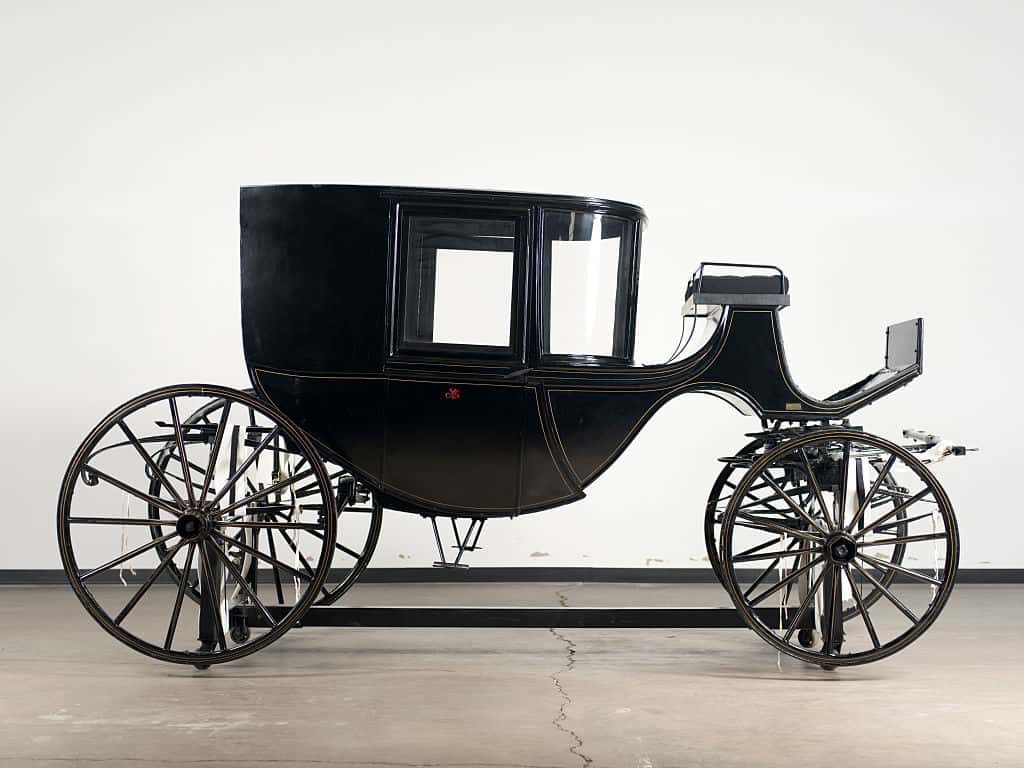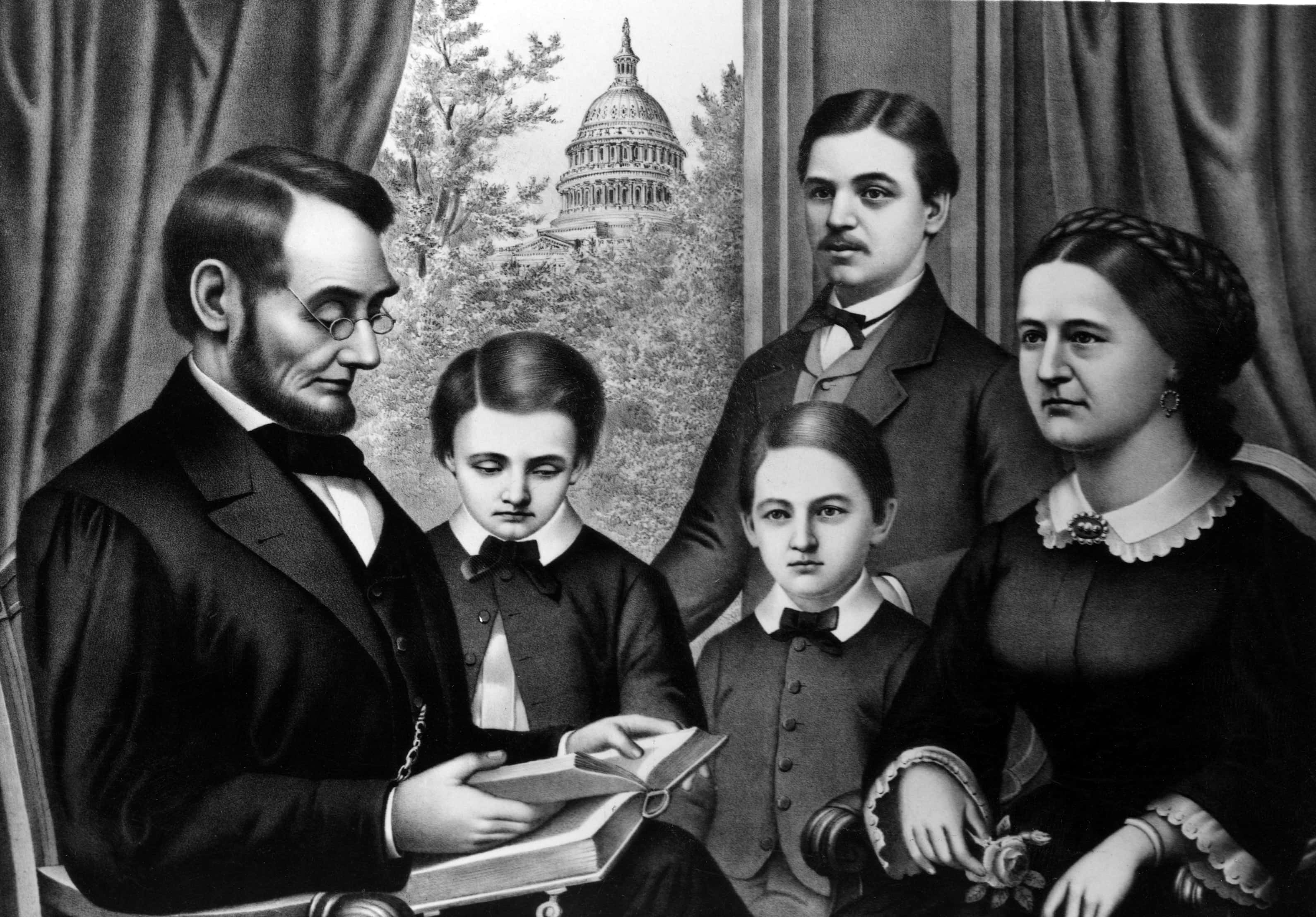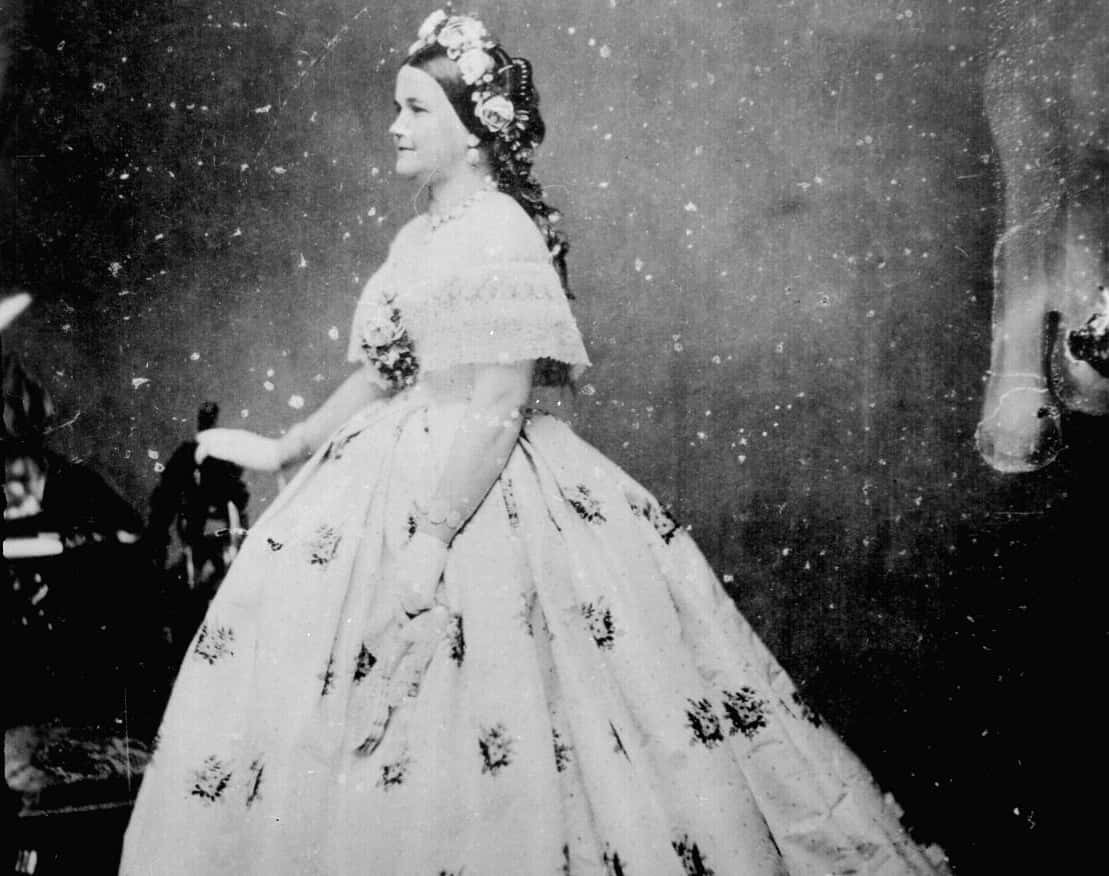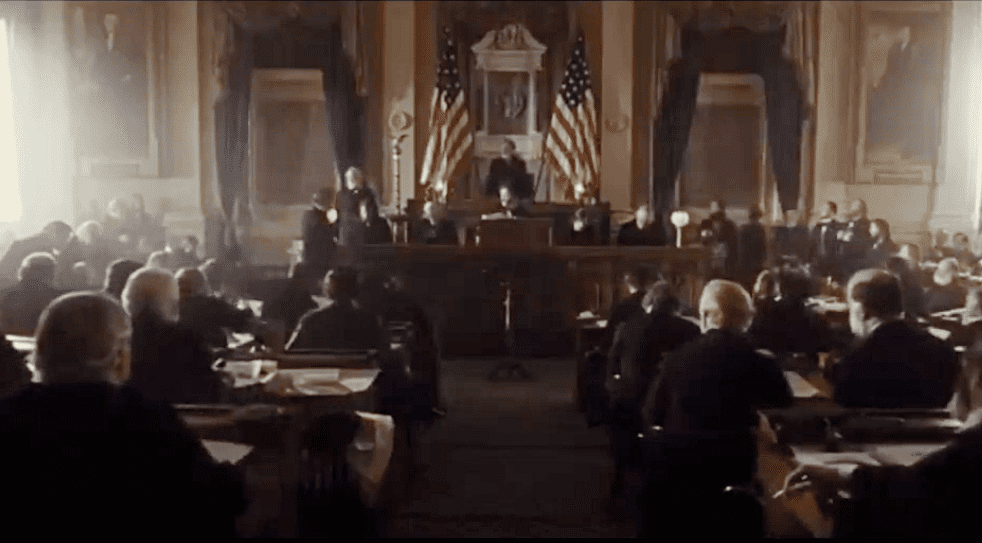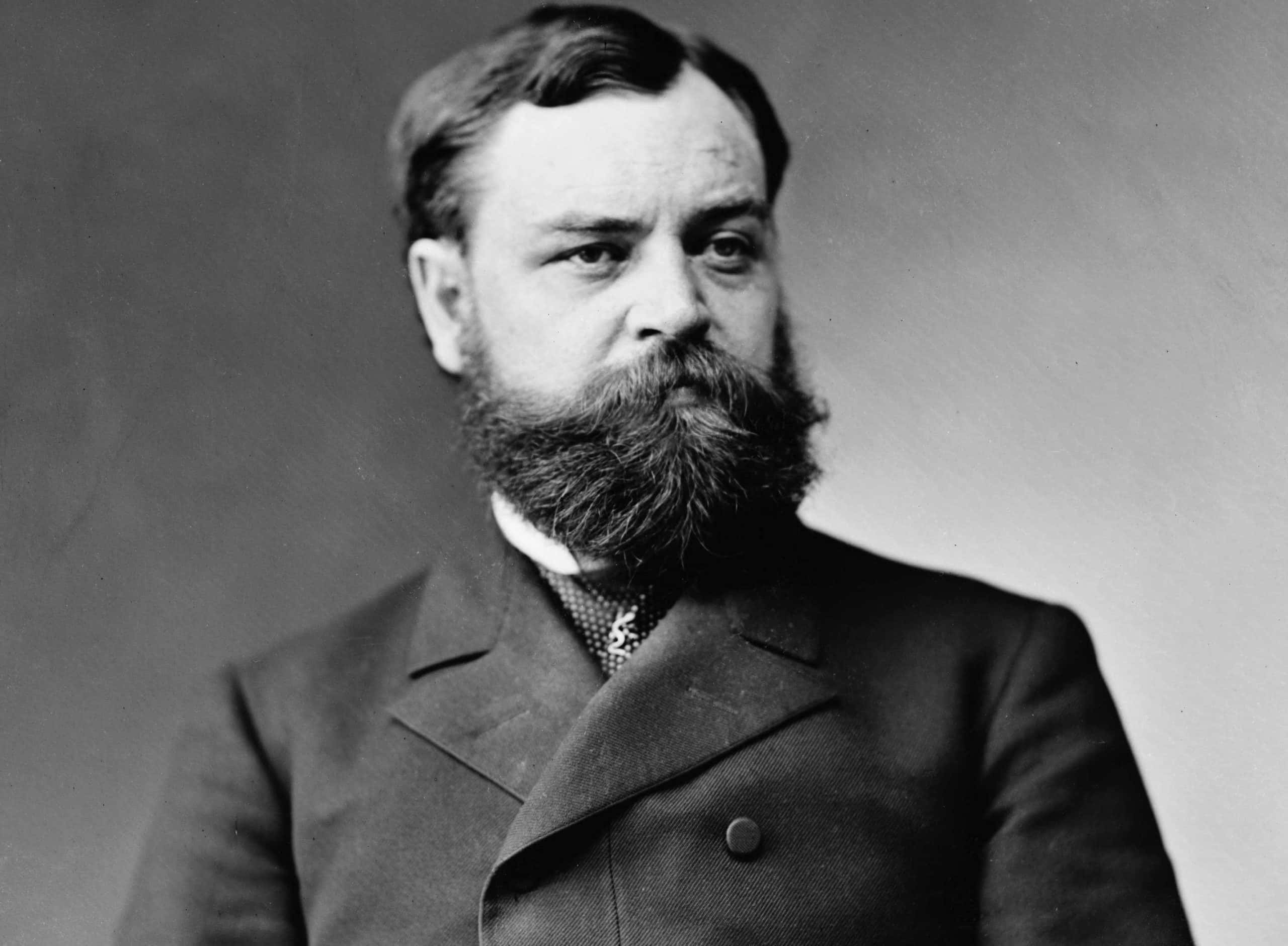One of the most well-known First Ladies in American history, Mary Todd Lincoln experienced the American Civil War at the side of her husband, the much-venerated Abraham Lincoln. In between tragic deaths in her family, divided loyalties, the burdens of politics, and the assassination of her husband, it’s almost no wonder that Mary’s mental state was so affected by the end of her life. If this all sounds like it would make for an interesting life, we here at Factinate suggest that you keep reading for more facts about Mary Todd Lincoln.
1. My First Day
Mary Ann Todd was born on December 13, 1818, in Lexington, Kentucky. She was the fourth of seven children born to Robert S. Todd and Elizabeth Todd (nee Parker).
2. High Society
It’s safe to say that Mary’s family was very comfortably upper-class. In 1832, Mary and her family lived in an opulent house that contained 14 rooms. It still stands to this day and is known as the Mary Todd Lincoln House after its most famous occupant.
3. Crowded House
If you think Mary had a large family, given that she was one of seven siblings, we should point out that this was just the start. Mary’s mother tragically died in childbirth when Mary was six, and her father remarried two years after that. He went on to have nine more children with his second wife. Try coming up with a budget for raising 16 children!
4. Mes Étudies
Mary was educated from a very young age. Specifically, she attended classes at Madame Mentelle’s finishing school. Mary’s studies were focused on social graces, music, drama, dance, and French. Mary was fluent in French for the rest of her life.
5. Prestigious In-Law
By 1839, Mary had moved to Springfield, Illinois to live with her sister, Elizabeth, who served as her guardian thereafter.
 Flickr, Internet Archive Book Images
Flickr, Internet Archive Book Images
6. In Another Timeline, Maybe
Abe wasn't the only man in Mary's life. Prior to marrying her famous husband, a number of prominent young men courted Mary. One of the more prestigious of her suitors was Stephen A. Douglas, a man who not only worked as a lawyer, but who also made a name for himself in the Democratic Party. If you’re seeing a parallel connection between Douglas and Abraham Lincoln’s careers, we have a lot more to tell you.
7. It was Always Personal!
Mary wasn’t the only connection between Stephen A. Douglas and Abraham Lincoln. The two men squared off in the presidential election of 1860. One line which divided Douglas and Lincoln was their stance on slavery, with Lincoln maintaining that he opposed it while fending off Douglas’ accusation that he also believed white and black men to be equal (this was a time when such a belief was considered “radical”).
As you all know by now, Lincoln defeated Douglas in the election, just as he’d defeated him in the attempt to win Mary’s heart. For what it’s worth, Douglas managed to put his personal feelings aside when the American Civil War broke out. Douglas rallied support for the Union until his death in 1861.
8. Who Needs the Judgment?
Mary’s husband was considered the first “western” president, given his home state. As a result, Mary and Abraham Lincoln were looked upon with some snobbery by the people in Washington DC. Despite a refined, upper-class upbringing, Mary was dismissed as lacking grace and manners.
9. Doing My Best
Although Mary was steadfast in her loyalty to her husband and was determined to be a respectable and accomplished First Lady, she struggled with adapting to the social etiquette demanded from those occupying the White House. Her struggles resulted in decisions which not only caused rifts between her and her husband, but also damaged her historical reputation (more on that later).
10. Someone Invent Tylenol!
Mary spent most of her adult life struggling with severe migraines—but one terrible incident made her suffering much worse. During Mary’s time in the White House, there was also an accident involving a carriage that left her with a head injury and caused her migraines to become more frequent and severe.
11. A Brace of Boys
Mary gave birth to four sons, all of them born in Springfield, Illinois. They were, in order of birth, Robert Todd Lincoln, Edward Baker Lincoln, William Wallace Lincoln, and Thomas “Tad” Lincoln.
12. Modest Matrimony
When Mary wed Abraham Lincoln, she was 23 years old, while he was 33. They were married in the home of Mary’s sister and brother-in-law.
13. My Debut
The first time that Mary was portrayed in film occurred in 1930. D.W. Griffith directed the film Abraham Lincoln, starring Walter Huston (the grandfather of Anjelica Huston) as the titular character. Mary was portrayed in the film by actress Una Merkel. The film has since gone into the public domain, so feel free to give it a watch!
 Abraham Lincoln (1930), D.W. Griffith Productions
Abraham Lincoln (1930), D.W. Griffith Productions
14. Let’s Make a Play Date!
When the Lincoln family moved into the White House, Mary’s two youngest sons, William and Tad, had a reputation for being troublemakers. In order to keep them from getting bored in their new home, Mary reached out to Julia Taft, a young woman whose father worked in the U.S. Patent Office. Julia brought her younger brothers to the White House, and they became playmates to Mary’s younger children.
15. Filling a Void
Julia Taft remained a constant figure in Mary’s life. As Mary had no daughters, she greatly appreciated the presence of the younger woman and got along very well with her. Julia went on to write a memoir about her relationship with the Lincolns during their stay in the White House. Her brother, Charles, was also one of the physicians who tried to save Abraham Lincoln’s life after he was shot by John Wilkes Booth.
16. Early Tragedy
Mary’s second-eldest son, Edward Baker, was better known as Eddie by his family. Both Mary and Abraham described their son as being a very sweet-natured boy. One anecdote associated with Eddie involved the child adopting a kitten brought into the house by his older brother, pleading with Mary’s stepmother not to throw the cat out of the house. Tragically, Eddie died in 1850, just a month before his fourth birthday—but this was only the beginning of his mother's sorrow.
17. Shaking Things Up
In an effort to make her mark upon the White House, Mary decided to refurbish it. Under Mary, the rooms within the White House underwent a massive redecoration process.
18. Money’s Tight Right Now…
Mary’s refurbishments of the White House were widely criticized at the time due to the high cost involved. Given that the Union was embroiled in the American Civil War at the time, these expenses were seen as frivolous and unnecessary. Even Abraham Lincoln was furious at the costs, even after Congress covered them.
19. More Champagne, Anyone?
Mary was further accused of trivial spending when she continued to host countless social functions at the White House, even during the worst of the American Civil War. Historians have often turned to this spending as a criticism of Mary’s conduct as First Lady.
20. Another Lost Son
In 1862, as the Civil War was raging on, even more heartbreak struck the Lincoln family. Mary's two youngest sons were struck down by sickness (it’s been speculated that the illness in question was typhoid fever). While her youngest son, Tad, eventually recovered from his sickness, William Lincoln died on February 20, at the age of 11.
21. Bereaved Mother
As you can imagine, both Mary and her husband were devastated at the loss of another son. Abraham took some solace in looking after Tad during his own recovery, but Mary was too paralyzed to do the same. In fact, Mary was so distraught that she stayed in bed for three weeks. Abraham needed to employ a nurse to help Mary recover.
22. An Eye for Shiny Stones
During her years as First Lady, Mary acquired a taste for jewelry. A local shop known as Galt & Bro was only too happy to supply the First Lady with all the jewels that she desired. She was able to buy many of them on credit—but her obsession took a dark turn after Abraham Lincoln was assassinated and she was no longer the First Lady. She was left in great debt to the jewelers, with no way to pay it off. Thankfully, the jewelers waived the debt after Mary returned many of her pieces.
23. For the Cause
While Mary had many critics due to her frivolous spending during the American Civil War, it’s worth pointing out that she was very active in supporting her husband’s cause as President of the United States fighting to reunite the North and South. She even traveled alongside Abraham to visit battlefields across the country.
24. Supporting the Troops
One of Mary’s finest acts during the American Civil War was the time that she spent visiting the military hospitals in Washington DC. She delivered flowers to wounded soldiers and spoke with them. Mary even wrote letters on the soldiers’ behalf to send back to their families and loved ones.
25. From One Widow to Another
As you can imagine, many people around the world wrote letters of condolence to Mary in the wake of her husband’s assassination. One of these people was none other than Queen Victoria, who shared a painful bond with Mary. She had lost her own beloved husband, Prince Albert, just four years prior, and she also took it extremely hard. Mary, who tried to answer all the letters which she received, acknowledged that Victoria had a very good idea of what she was suffering through and greatly appreciated her sympathies.
Just like Victoria, Mary wore black for the rest of her life.
26. Back to Illinois
Following her departure from the White House, Mary moved to Chicago, along with both her surviving sons, Tad and Robert. Tad and Mary also traveled to Europe in 1868 and lived there for nearly three years before returning to the Windy City, where Robert was establishing a law career.
27. It was a Good Year
2012 saw three different films that featured Mary as a character. She was portrayed by Sally Field in Lincoln, Mary Elizabeth Winstead in Abraham Lincoln: Vampire Hunter, and Penelope Ann Miller in Saving Lincoln.
 Saving Lincoln (2013), Pictures from the Fringe
Saving Lincoln (2013), Pictures from the Fringe
28. Due Compensation
On July 14, 1870, Mary was given a life pension by Congress (at this time, former US Presidents weren’t automatically given a pension, let alone their widows). Mary didn’t receive this pension until a hard campaign of lobbying on her part, arguing that she was owed as much as the widows of the soldiers who’d died fighting for the Union in the American Civil War.
In case you’re wondering, Mary received $3,000 per year, almost $60,000 in today's money.
29. Maybe it’s Voodoo?
Death seemed to follow Mary’s eldest son, Robert Todd Lincoln, wherever he went. He was not present at the assassination of his father, but he was close at hand. He was staying at the White House at the time, and rushed to join his parents soon after. Robert went on to not only witness President James A. Garfield be shot by Charles Guiteau, but was also standing outside the building in Buffalo when President William McKinley was shot by Leon Czolgosz.
Robert himself was aware of the coincidence, and once even jokingly refused an invitation to a presidential event, stating that there was a “certain fatality about presidential functions when I am present.”
30. What Might Have Been Avoided
Mary nearly thwarted her husband's assassination—by accident! Shortly before she and Abe were due to arrive at Ford’s Theatre, Mary attempted to cancel the outing due to a developing migraine. Abraham, however, insisted that the newspapers had already stated they’d be going to the play, and many would be disappointed if they didn’t show up. Mary relented, and she accompanied him to the theatre as was planned.
31. Does the Sadness Never End?!
Mary’s youngest son, Tad, died at the age of 18 on July 15, 1871. It isn’t known what caused his death, but some of the suspected illnesses are tuberculosis, pneumonia, and congestive heart failure. His body was taken to Springfield and buried alongside his father and two dead brothers. Mary was unable to make the trip to accompany the casket due to her grief.
32. Misery Me!
Following the deaths of her husband and three of her sons, Mary fell into a terrible depression. She spent vast sums on frivolities that she never made use of, yet also became dreadfully afraid of sinking into poverty (despite being provided for thanks to the life pension which Congress had approved). Moreover, Mary was paranoid that she and her surviving son, Robert, were being poisoned.
33. Et Tu, Robert?
Eventually, Mary’s behavior alarmed her son Robert so much that he took drastic actions. In 1875, Robert began the procedure to have his mother committed to an asylum, much to her horror. The proceedings were successfully carried out after a trial that same year, and Mary was placed in a private asylum in Batavia, Illinois.
34. We Can Only Speculate
Historians have often speculated that Mary’s erratic behavior and mood swings were indicative of undiagnosed bipolar disorder. Given the time period, nobody recognized the condition for what it was, nor would they have been able to provide much treatment for such. Another medical theory surrounding Mary is that her mental and physical symptoms could also point to pernicious anemia.
 Wikimedia Commons
Wikimedia Commons
35. Is That My Prescription?
Due to the frequent headaches from which she suffered, coupled with her volatile emotions, Mary was frequently given drugs to calm her. These drugs contained both alcohol and opium, as was typical from that historical time period.
36. You Can Do It!
Sally Field played Mary in Steven Spielberg's Lincoln—but she almost missed out on the part because Spielberg didn't think she was right for it. To be fair, she was 20 years older than the real Mary had been during the film’s events, but Field was determined to land the role of a lifetime. While Spielberg was hesitant, he allowed Field to do a screen test.
Daniel Day-Lewis (who played Abraham Lincoln) voluntarily made the journey to act alongside Field in the test, which secured her role in the film. Then, as if she hadn't yet proved she was committed, Field gained 25 pounds for the role!
37. Is This the End?
After a life filled with so much tragedy, Mary finally hit rock bottom when her only remaining son had her institutionalized. After the court proceedings, Mary visited multiple pharmacies and tried to purchase enough laudanum to take her own life. However, one vigilant pharmacist noticed what Mary was doing and gave her placebos, saving her life.
38. Can’t Knock Me Down!
After a failed escape attempt from the private asylum just three months after she was committed, Mary used another tactic to get herself released. She smuggled out letters to her few remaining friends, one of whom was Myra Bradwell, a feminist and the wife of a prominent lawyer. Bradwell ensured that the press was made aware of Mary’s situation, which was the exact sort of public embarrassment that Robert had hoped to avoid in the first place.
Due to the negative public backlash, the hospital released Mary into the care of her sister, Elizabeth. In 1876, Mary regained control over her own affairs again.
39. One Heck of a Thanksgiving…
One irony about Mary’s marriage to Abraham Lincoln was the fact that not only was she from a border state where slavery was permitted at the time, but her family had been slave-owners. To make things even more awkward, her brother served in the Confederate Army as a surgeon while a number of her half-brothers were killed fighting for the Confederacy.
40. A Fateful Day
Mary spent the early 1880s in her sister’s home once again. On July 15, 1882, Mary suddenly collapsed, going into a coma. It was the 11th anniversary of her youngest son’s death. She died the next morning of a stroke at the age of 63.
41. No Hard Feelings?
Even though he was the last of her sons, Mary never forgave Robert for having her institutionalized. They didn’t see each other until only just before her death, which we can assume had to have been a truly awkward reunion.
42. Last Words Together
As you might recall, Abraham Lincoln was assassinated by John Wilkes Booth on April 15, 1865. At the time, he and Mary were sitting in Ford’s Theater, watching a rendition of the play My American Cousin. They were sitting with Henry Rathbone and Clara Harris. As Mary sat close to her husband and held his hand, she whispered in his ear, “What will Miss Harris think of my hanging on to you so?” Abraham smiled and answered, “She won’t think anything about it.”
It was the last conversation ever they had.
43. Who’s Cutting Onions?
Mary was holding Abraham’s hand when he was shot in the back of the head by John Wilkes Booth. So horrified and grieved was Mary that she had to be forcibly removed from Abraham’s side as he lay in a coma for the last hours of his life. Just before Abraham passed, Mary was permitted to see him again. Even as she called to him desperately with “every endearing name” that she could think of, Abraham died without making any indication that he heard her.










